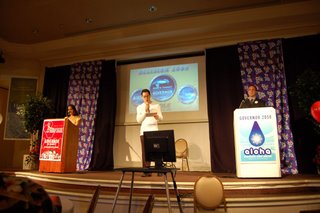Experiential futures and the intersection between design and foresight
I have just attended a very interesting presentation by Stuart Candy on prototyping possible worlds. Stuart joined global design firm Arup six weeks ago after finishing his Ph.D on experiential futures at Hawaii’s Research Center for Futures Studies. Below are some of my live notes from his presentation plus a few reflections.
Stuart uses the word ‘monofuturism’ to describe the mistaken assumption that because only one future will happen, only one future can happen, so we need to try to work out what that future will be.
In thinking about the future, he brings out the issues of breadth and depth: breadth is about thinking widely about what could happen, depth is about thinking in sufficient detail about what could happen and the implications.
Breadth can be dealt with by scenario planning and alternative futures, and that is being done reasonably well by leading organizations. Depth, generating specificity in what future worlds will look like, is generally done less well.

Presentation of one of the scenarios from Hawaii 2050
Stuart used the example of a Hawaii 2050 futures project he helped created in which they brought the scenarios to life in an event, getting people to participate in what those scenarios would look like. He provides a nice overview of the scenarios and how they evoked them in an event for over 500 people.
In addition to the live events they created FoundFutures (similar to the ‘artifacts from the future’ featured on the inside back cover of Wired magazine), and what they called Postcards from the future that provocatively evoked key aspects of the imagined world.
Stuart says that he and his colleagues as futurists stumbled into design because of engagement as their goal and experience as their canvas. Design intermediates imagination and the tangible. Experiential futures evoke how alternative futures might feel.
Stuart says that foresight and design are isomorphic – they have the same shape, through sharing key characteristics:
1. creative processes
2. iterative
3. alternating divergent and convergent phases
4. mediate values (desires) and facts (resources)
5. overall: “optimization within constraints”
It was great to hear what Stuart is working on, and to see that is being applied on a large scale with Arup. Certainly the best practitioners of scenario planning have used video, performance, and other means to bring future worlds to life for their clients, and at Future Exploration Network we have used a variety of tools and experiences to stimulate real appreciation of possible futures and as a result changed thinking. However it is definitely fair to say that most futures projects create reports rather than experiences, and one of the ways to make the futures field more compelling, powerful, and useful is to make it more experiential.
Let’s hope that futures work becomes far more focused on generating real experiences that change how people think and act. That’s what future thinking should really be about.
